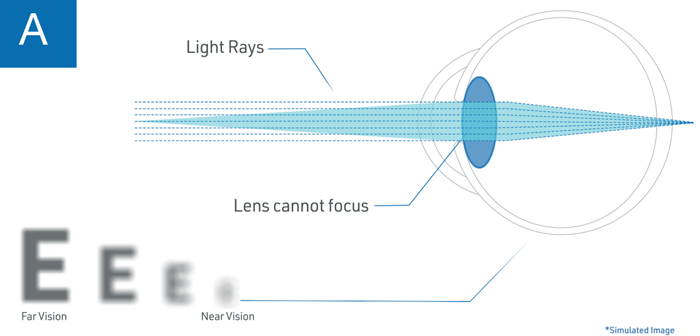
The IC-8 one-piece hydrophobic acrylic IOL is designed to compensate for the focal consequences of peripheral defocused light, thereby enabling correction of presbyopia with a broad, continuous range of focus (Figure 1).
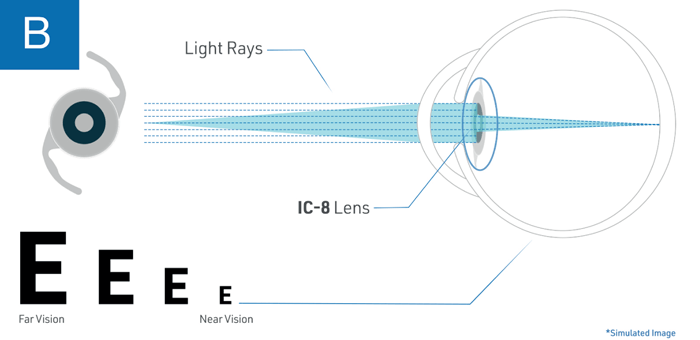
The design of the IC-8 IOL enables it to provide up to 3.00 D of extended depth of focus (EDOF), tolerate up to 1.00 D deviation from the target manifest refraction spherical equivalent, and accommodate as much as 1.50 D of corneal astigmatism (1, 2, 3, 4). In addition, this unique IOL can reduce the effects of both lower and higher order aberrations (HOA), including corneal HOAs such as coma, based on the small aperture effect. How does the IC-8 IOL provide this range of benefits?
The fundamental feature of the IC-8 lens, as Christopher Chan points out, is the opaque annular mask, which blocks scattered, defocused and aberrated peripheral light, but allows the passage of paraxial, central light rays (Figure 2). Chan says, “This flattens the defocus curve on the myopic/hyperopic side, resulting in EDOF.” Gerd Auffarth elaborates: “Essentially, the IC-8 IOL uses the pinhole effect to exclude peripheral defocused light – which compromises image quality – and permits only central, focused light to reach the retina.”
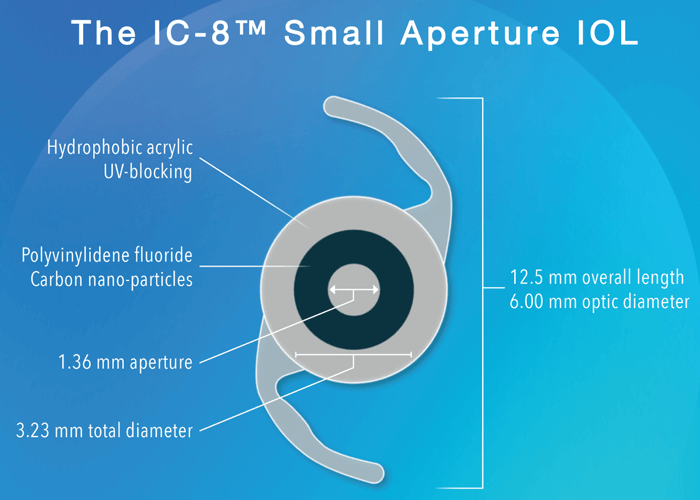
"I have found for patients where power calculation is a problem, the small aperture IC-8 lens is quite forgiving – even when the refractive outcome is not perfect, the patient will have good distance, intermediate and near vision." Sathish Srinivasan
Brendan Vote provides some detail: “The small (1.36 mm) non-diffractive aperture of the IC-8 lens, together with the absence of diffractive surface structures in the IOL, allows it to act as a ‘universal’ corrective lens. Furthermore, the optimized size of the mask provides both excellent quality of vision and a modulation transfer function superior to that of other multifocal or EDOF lenses."
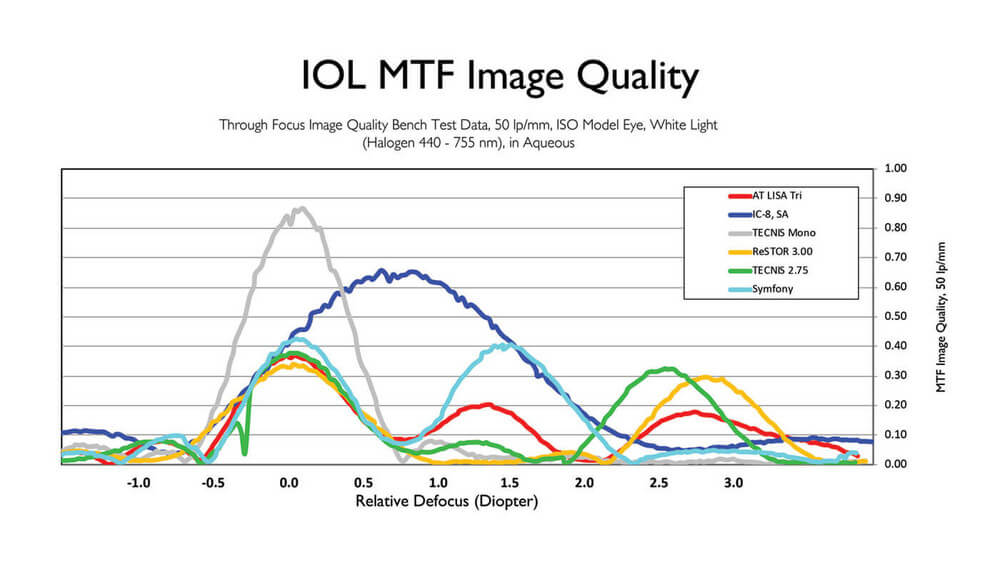
Jacqueline Beltz reminds us of a practical benefit: namely, that the IC-8 IOL can compensate for up to 1.50 D of astigmatism without needing to be placed on a particular axis. “Hence, this IOL has a larger ‘sweet spot’, making it easier to use and to achieve patient satisfaction,” she says.
Vote elaborates: “The 1.50 D value is significant, because this level of astigmatism is commonly introduced by biometric errors, arising from dry eyes and tear film irregularity.”
Overall, Auffarth summarizes that the IC-8 IOL’s pinhole effect blocks peripheral defocused light which may actually block glare in some situations. These features, says Chan, explain why, in his experience, the IC-8 IOL has lower dysphotopsia rates than multifocal IOLs but exhibits no significant reduction in binocular contrast sensitivity. Vote concludes: “Compared with monovision patients, IC-8 IOL recipients have good binocular distance vision as well as good intermediate and near vision.”
Go to the next part, Extended Range of Patients
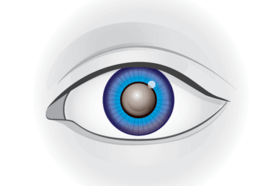
To see the other parts of this series, go to The IC-8 IOL: Big Advantages Through Small Apertures
To download the full publication, please click here
View the next article in the series
To view all parts of this series, go to The IC-8 IOL: Big Advantages Through Small Apertures
To download the full publication, please click here
References
- Data on file at AcuFocus, Inc.
- H Dick et al., “Prospective multicentre trial of a small-aperture intraocular lens in cataract surgery”, J Cataract Refract Surg, 43, 956 (2017). PMID: 28823444.
- RE Ang, “Small-aperture intraocular lens tolerance to induced astigmatism”, Clin Ophthalmol, 12, 1659 (2018). PMID: 30233128.
- RE Ang, “Comparison of tolerance to induced astigmatism in pseudophakic eyes implanted with small aperture, trifocal, or monofocal intraocular lenses”, Clin Ophthalmol, 13, 905 (2019). PMID: 31213762.
